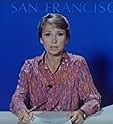Aggiungi una trama nella tua linguaA respectable businessman becomes the prime suspect in the abduction and murder of several young girls; he is hounded by the media and disowned by his friends and neighbors.A respectable businessman becomes the prime suspect in the abduction and murder of several young girls; he is hounded by the media and disowned by his friends and neighbors.A respectable businessman becomes the prime suspect in the abduction and murder of several young girls; he is hounded by the media and disowned by his friends and neighbors.
- Regia
- Sceneggiatura
- Star
Ronald G. Joseph
- Sergeant Mendoza
- (as Ron Joseph)
Recensioni in evidenza
A most common phylum within the Theatre of Paranoia cinema genre revolves about innocent men who are in the wrong place at the wrong time, causing diligent law enforcement agencies to pay close notice of them, thus radically changing the smooth tenor of their lives, with perhaps the most renowned example being THE WRONG MAN by Hitchcock; this film, produced for television, is one of the best of the lot, thanks to the contributions of a fine cast and above standard production characteristics. In an imaginary small southern California city of Santa Luisa, four young girls have been abducted and murdered over a period of several years, with no suspect having been identified until a chain of circumstantial events, in combination with a vague witness description, casts suspicion upon respectable family man and local business executive Frank Staplin (Mike Farrell) who had purchased Girl Scout cookies from the recent victim, he being the last person observed with the child while she was alive. Frank has come to the attention of the Santa Luisa Police Department due to his act as a good citizen of reporting to detectives that he had purchased the cookies, believing by his statement that the physical location of the victim when last seen could be utilized as valuable data, but the investigators soon find cause and opportunity to concentrate their efforts upon the unfortunate Samaritan. His personal life now dramatically altered by being a homicide suspect, Frank, along with his bewildered wife and child are most deeply distressed by rabid media attention to them, primarily from a local television station's news division that fosters the customary streamlined journalistic mode concerning the notorious serial murder case, although telecaster Amy McCleary (Teri Garr) feels contrition as she becomes more knowledgeable of the Staplin family's fresh misery, and she attempts to actively aid the falsely accused man as he sets about proving that he is free from guilt. The work is scripted well with naturalistic dialogue, but there are some obvious problems with continuity, such as when the latest victim, lured by the anonymous killer, is seen entering a vehicle that is a close match of that driven by Staplin, this scene and the automobile connection therewith dropped during ragged post-production editing, and the role of Amy is erratically handled, apparently because the character's significance is being shifted during filming. Nonetheless, even with these shortcomings, and an obtrusively cookie cutter score, the film generates interest in a viewer from the start, with the direction, cinematography and design all being top-flight notwithstanding a small budget, and there is an abundance of solid playing throughout, notably by the versatile Farrell and Garr, with Lane Smith and Barry Corbin impressive as zealous supervisory police personnel, the acting laurels earned here by Veronica Cartright as Staplin's wife, as she is affecting in each of her scenes despite a lack of retakes.
8 for good to great
It does have some very annoying characters like the bureaucratic cynical cop and ratings hungry news anchor but Farrell, Garr, Cartwright et al make up for them and keep this interesting.
A small girl is missing, and an honest working man had bought a box of candy from her before she vanished. Someone had seen him with her, and from her description a phantom picture is made up and spread, and he is recognised as the man who was last seen with the girl. So he becomes the prime suspect. The interesting thing is how all the vultures of the news game immediately get their claws into him, which results in a public execution of him on television. It does not matter that he is later found innocent, as the body of the lost girl was found 90 miles away from where he was at the time, he is still branded and everyone disdains him and avoids him, especially his neighbours, a damage like this takes time to repair, if it can be repaired ever. Mike Farrell as the wrong man makes a great performance, he fights back, and he has his wife by his side, unlike Hitchcock's "Wrong Man" 1956, who lost his wife in the ordeal. It's an important and well made film, stressing its documentary value and character, because this could happen to anyone. Above all, it directs attention to the ruthlessness of the press.
8 for good to great It does have some very annoying characters like the cop and news anchor but Farrell, Garr, Cartwright et al make up for them and keep this interesting. Good.
Considering the serious subject matter of the film, it's all the more incongruous that at one point the word "ARSE" appears prominently in several scenes.
For example, one shot has Mike Farrell in an office facing the camera and over his shoulder the street number is visible (in reverse) on a window. The number is "3216", which appears as the word "ARSE" when seen in reverse.
Another example scene is in chapter 3, at 20:14 minutes, as Teri Garr approaches the office door (viewed from inside the office).
I was so surprised by this that I went to the trouble of photographing that particular scene and placing copies online at www.story-lines.com/IMDb. These are large files, but if you feel inclined, take a look and see if you agree. (And that's "imdb" all in lowercase - for some reason, the submission process changes that to IMDb every time. PB)
One shows the scene with "ARSE" visible, the other shows the location on the DVD from which the screenshot was taken.
It's entirely possible that this was an accident, but I would have thought that it would have been picked up early in production.
If it was a deliberate act, one wonders why it was done - was there some issue about behavior during production that resulted in a little passive-aggressive payback? Curious minds would like to know...
For example, one shot has Mike Farrell in an office facing the camera and over his shoulder the street number is visible (in reverse) on a window. The number is "3216", which appears as the word "ARSE" when seen in reverse.
Another example scene is in chapter 3, at 20:14 minutes, as Teri Garr approaches the office door (viewed from inside the office).
I was so surprised by this that I went to the trouble of photographing that particular scene and placing copies online at www.story-lines.com/IMDb. These are large files, but if you feel inclined, take a look and see if you agree. (And that's "imdb" all in lowercase - for some reason, the submission process changes that to IMDb every time. PB)
One shows the scene with "ARSE" visible, the other shows the location on the DVD from which the screenshot was taken.
It's entirely possible that this was an accident, but I would have thought that it would have been picked up early in production.
If it was a deliberate act, one wonders why it was done - was there some issue about behavior during production that resulted in a little passive-aggressive payback? Curious minds would like to know...
I più visti
Accedi per valutare e creare un elenco di titoli salvati per ottenere consigli personalizzati
Dettagli
Contribuisci a questa pagina
Suggerisci una modifica o aggiungi i contenuti mancanti

Divario superiore
By what name was Prime Suspect (1982) officially released in Canada in English?
Rispondi

























